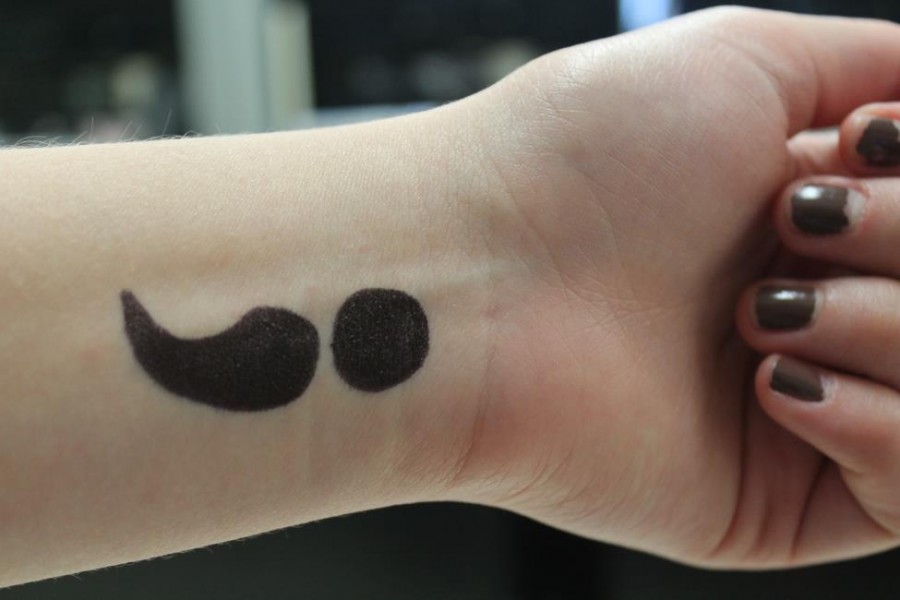Just a pause; not an end
Project Semicolon, a movement to raise awareness for mental illness and give hope to those who are struggling, makes an impact on the girls of Mercy.
Project Semicolon began as a social media movement in 2013. The founder, Amy Bleuel, started the movement to honor her father who had committed suicide. The project immediately gained support, as the semicolon resonated with many whose lives were affected by mental illness.
The semicolon, grammatically, represents a pause in a sentence — a spot where two independent clauses are joined together to be one sentence. Unlike a period, a semicolon does not mark the end of a sentence. Rather, it marks a new, related beginning.
Project Semicolon aims to show support and love for anyone struggling. According to projectsemicolon.org, “Project Semicolon exists to encourage, love and inspire.”
And it has been successful in doing so. This movement has not only swept the nation, but also the halls of Mercy High School.
“Depression is not something we talk about enough,” said junior Ciara Lopus. “I think that there needs to be more awareness [of] mental illness.”
Mercy girls learn about the different types of mental illnesses during their sophomore year in health class.
“I am glad that we had serious conversations about mental illnesses,” said Lopus. “I am inspired by movements such as Project Semicolon that promote awareness and acceptance of people who have these illnesses. I love this movement and what it stands for.”
It has become common for supporters of Project Semicolon to get a semicolon tattoo. Many Mercy girls can be found with a semicolon drawn on their wrist in support of Project Semicolon. Senior Mikaylah Gard is one whose wrist often sports this symbol.
“I know multiple people suffering with depression so this movement means a lot to me,” said Gard. “It’s reassuring to know that there are other people who have gotten through depression and share their stories with others so that they know that it is not the end and eventually it will get better.”
Another senior, Olivia Collins, shared similar thoughts.
“I think it’s important to raise awareness and help erase the stigma placed on those with mental illnesses,” said Collins.
Many people don’t realize the severity of mental illnesses, and movements such as Project Semicolon help to increase awareness.
“I think that Project Semicolon is a wonderful idea that will hopefully help people for a long time,” said junior Rachel Squier. “I hope that movements like this continue to grow and that people will call on them in their time of need.”
Katie Rizik, a 2015 Mercy graduate, has a semicolon tattooed on her wrist.
“I think the movement is so important because it’s physical support of something that’s so prevalent, but never talked about,” said Rizik. “Even if someone hasn’t gone though diagnosed depression, everyone has difficult times that they choose to fight through. I think it’s awesome for people to have these tattoos, supporting total strangers, and holding their hand through whatever it is they’re going through.”
The semicolon represents the message that hard times are only a pause before a brand new beginning. Project Semicolon has impacted so many, raising awareness for mental health and supporting those who are struggling.
“Project Semicolon envisions a world where people see their value and embrace it, which I think is super important,” said senior Calli Jansen.

